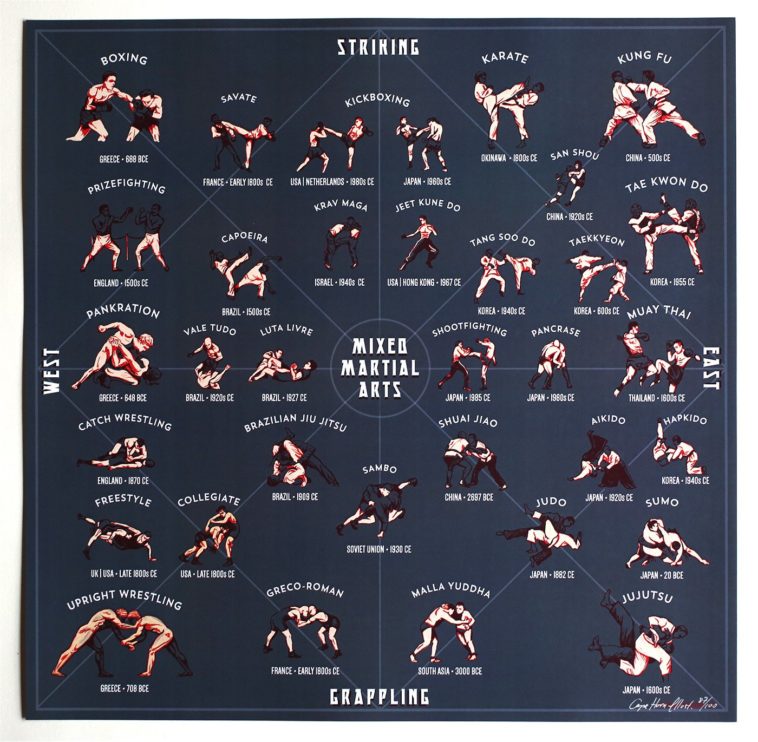Unraveling The Secret Of Several Fighting Style Techniques: An Overview To Martial Arts, Taekwondo, And Extra
Unraveling The Secret Of Several Fighting Style Techniques: An Overview To Martial Arts, Taekwondo, And Extra
Blog Article
Material Author-Aldridge Russo
Are you tired of feeling overwhelmed by the large globe of martial arts? With a lot of styles to choose from, it can be very easy to obtain lost in a sea of strikes, kicks, and mystical names. But fear not!
This conversation will certainly debunk the different martial arts styles, taking you on a journey from the powerful strikes of Karate to the vibrant kicks of Taekwondo. Prepare to reveal the origins, methods, and ideologies behind these old art kinds.
So, tighten your belt and prepare to embark on an enlightening exploration right into the captivating globe of fighting styles.
Origins of Martial Arts Styles
The origins of fighting styles styles can be mapped back to old human beings and their demand for protection and combat methods. Throughout history, various societies created their own one-of-a-kind approaches of battling, each with its very own collection of methods and approaches.
In China, for instance, fighting styles designs such as Martial art and Tai Chi were created as a way of protection and improving physical and psychological well-being.
In Japan, the samurai warriors produced styles like Martial arts and Judo, concentrating on technique, accuracy, and mastery of the body.
Similarly, in Korea, Taekwondo became a martial art stressing high kicks, rapid motions, and psychological fortitude.
These very early human beings laid the foundation for the varied array of martial arts styles that exist today, each with its very own abundant history and cultural relevance.
Techniques and Training Approaches
To master fighting styles styles, professionals must discover different methods and training techniques.
Methods are the specific movements and actions utilized in fight, such as strikes, kicks, tosses, and obstructs. see this here fighting styles styles have their very own distinct set of methods that practitioners need to understand via rigorous training.
visit website differ depending upon the design, but they generally entail a combination of physical fitness, drills, competing, and kinds.
Physical fitness is vital to construct toughness, versatility, and endurance. Drills assist practitioners refine their techniques and enhance their rate and accuracy.
Competing enables professionals to exercise their strategies in a managed, reasonable setting. https://best-martial-arts-for-fat33321.csublogs.com/40828606/start-a-transformative-journey-via-martial-arts-promoting-mental-clearness-and-psychological-perseverance-and-uncover-a-much-deeper-feeling-of-personal-stamina-and-self-awareness , likewise called kata, are ironclad series of motions that aid practitioners develop muscle memory and emphasis.
Philosophies and Principles
Exploring the approaches and principles of fighting styles designs can offer you with a deeper understanding of your selected self-control. Each fighting style has its own one-of-a-kind philosophy and set of leading principles that form the way it's exercised.
For instance, Martial arts stresses self-control, respect, and self-discipline. It teaches professionals to concentrate their minds and bodies, allowing them to safeguard themselves while keeping a sense of internal peace.
On the other hand, Taekwondo places a solid emphasis on rate, dexterity, and flexibility. Its concepts are rooted in the tenets of courtesy, honesty, determination, self-control, and resolute spirit.
Conclusion
Since you've checked out the origins, strategies, and viewpoints of numerous fighting styles designs, you have a much deeper understanding of these ancient self-controls.
Picture a young karate student, experimenting undeviating determination and emphasis, breaking through boards with a powerful strike.
Their journey showcases the commitment and strength needed to grasp a fighting style, advising us that with discipline and determination, anything is feasible.
